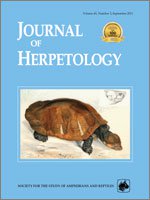Although a keratinous rattle structure at the end of the tail is the defining trait of rattlesnakes, there is variation in the ability of rattles to produce sound. In previously reported cases of reduced rattle functionality, near complete loss of sound production occurs in adult snakes that do not retain loose interlocking rattle segments. Here we report for the first time a distinct phenomenon: the delay in development of a functional rattle among neonate and juvenile Ridge-nosed Rattlesnakes (Crotalus willardi) resulting from universal loss of the rattle button, normally the first loose segment retained in functional rattles. Loose segments added during subsequent sheds are retained at rates similar to two other rattlesnake species examined (based on data from over 1,000 wild-caught rattlesnakes) and presumably other rattlesnakes with sound-producing rattles. This pattern of delayed rattle development results in effectively silent cohorts for approximately the first year of life and provides further insight into the ecological context of rattle function and evolution.
How to translate text using browser tools
1 September 2011
Rattle Button Loss in Juvenile Ridge-nosed Rattlesnakes (Crotalus willardi): A Novel Mechanism for the Developmental Delay of the Rattle
Kirk Setser,
Estrella Mociño-Deloya,
Jesse M. Meik
ACCESS THE FULL ARTICLE

Journal of Herpetology
Vol. 45 • No. 3
September 2011
Vol. 45 • No. 3
September 2011




